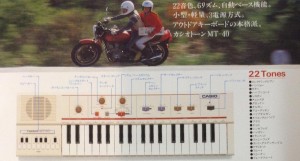There’s a story in today’s NY Times about some guys who get together in a garage in Queens (NY) and podcast their takes on recent rock news. They also have guests. This week: CJ Ramone. Other weeks? Steve Albini and the guy who directed the movie Riot on the Dance Floor, about that New Jersey club, City Gardens, that everybody says was legendary.
These guys are in their 40s, by the way. And one of them has an actual bar in his garage, where his wife lets him hang out so he doesn’t hang out with his friends in their house. And probably ruin their kids. I don’t know. It’s a fun story well worth reading.
Which reminds me that the Remnants have talked about doing their own podcast. I think we think it would mostly be music. But I suspect there will be talking. I have some ideas for features:
Remnants Telephone. One Remnant plays a song, then the other Remnants in turn each play a song with some connection to the preceding song. After the four songs are played, each Remnant in turn says why he chose his song and its relation to the preceding song. Conversation ensues.
This Day In Rock. Each Remnant, or one Remnant, tells a story about something that happened in history on that date, and conversation ensues.
Song of the Week. Tom plays and explains his song. Conversation ensues.
Prick up your ears. One Remnant plays a contemporary song, a find, a discovery, others listen, conversation ensues.
Outro. Four (or five, if Tom is in) songs, without comment or conversation, one each by a Remnant.
Fade to black.
In subsequent episodes we start with clips from the Outro and comments by Remnants and we hope eventually listeners and commenters about the songs. And so the snake eats its tail. And we eat our tale.
But maybe you have other ideas? Like what does Moyer think about Graveyard now? Some of us have bated breath. Some of us have abated caring.
See you on the radio!




